Northern Irish Team
Korogwe, Tanzania
November 2018
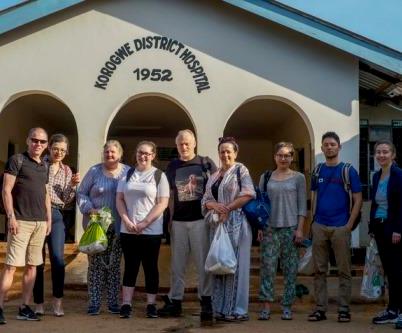
November came and so we embarked in our mission to Korogwe , Tanzania, the 11th mission of Hernia International to this wonderful part of the world. Our team was composed of 4 surgeons, 2 anaesthetists and 4 theatre nurses.
Surgeons:
Mr Aleksander Stanek-TEAM LEADER, Consultant General Surgeon, Northern Ireland, UK, with a vast experience in organising and taking part in hernia missions in Sub Saharan Africa.
Mr Gregory Wirth, Urology Surgeon, Switzerland, several times volunteer with Hernia International.
Ms Gergana Racheva, Paediatric Surgeon, England, UK, 1st mission.
Ms Cristina Croitoru, Surgical Registrar, Northern Ireland, UK, my 3rd mission.
Anaesthetists:
Dr Patrick Stewart, Consultant Paediatric Anaesthetist, Northern Ireland, UK, 2nd mission.
Dr Tilman Yue, Anaesthetist, Switzerlands , 1st Hernia International mission but with previous experience in missions in areas of military conflict.
Theatre nurses:
Hazel Dineen, Tanya Vance and Helen Sheridan from Northern Ireland, UK, 1st mission.
Maelle Achard, Switzerlands , 1st mission.
Our mission began in Dar Es Salaam, biggest city in Tanzania, where we all meet on Saturday 10th of November after flying from different corners of Europe. Or, actually, it began nearly a year ago when we started to prepare, to gather equipment, to obtain registration with the Tanzania’n Medical Council and to arrange all the logistics needed for a successful Hernia International Mission. Our person of contact, was Sister Avelina Tempa, Surgeon and Sister with the Catholic Order of Sisters of Usumbaya, who works in both Korogwe Hospital and St. Joseph Healthcare Centre, part of the Convent, which we had the pleasure to visit in our last day.

We left the hotel in Dar Es Salaam Sunday morning and we traveled for 6 hours (with stops) in an air conditioning bus , arranged by Sister Alina Tempa, to Korogwe, 281 km north-west.
On arrival to Korogwe we headed directly to the hospital where we were greeted by Sister Avelina, the Medical Director of the Hospital and the rest of doctors and administrative staff.We the set on to arrange all the equipment that we brought, see the patients for next few days, prepare the theatres and make the operating lists for the next morning. After dark we returned to the White Parrot Hotel for a cold Tusker Beer and a well deserved rest. The White Parrot Hotel is 30 minutes walk from the hospital, 10 minutes by car or Tuck-Tuck. It is clean, has hot water showers and a a decent food buffet, all for roughly £20 a night. The restaurant is outside so DEET is essential.
The next day most of the team went to The Korogwe District Council to meet the government officials and sign in in the Republic of Tanzania Visitors Book. For Mr Stanek, Dr Stewart and myself this was our 2nd mission to Korogwe.
After being there in May 2017 we desperately wanted to return and try to improve the quality of the service we delivered to the people from Korogwe and Tanga area who came to the hospital for our help. The issues we tried to address this time around were:- Oxygen-as there was a shortage of Oxygen last year we contacted a company that deliver two tanks of oxygen to the hotel in Dar El Salam and we successfully transported it to Korogwe.
– Repairing one of the anaesthetic machines donated to the hospital by Spanish Rotary club. Unfortunately despite Dr Stewart’s best efforts the machine functioned only for a few hours so he had to use one of the old anaesthetic machines that uses Halothane as the anaesthetic gas.
– Recovering the patients. As the hospital doesn’t have an official recovery room with the help of our wonderful Theatre nurses and monitoring -pulse oximeters (£10 on ebay) we managed to successfully recover all patients prior to returning them to the ward.
– Introducing patient safety tools: WHO Surgical safe list, Patient Identifier armband, patient Hernia surgery information leaflet.
– Delivering teaching to local staff, especially in performing Hernia repair under Local anaesthesia.
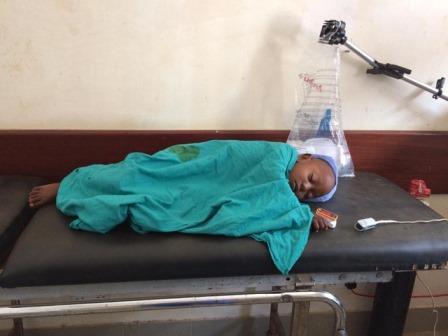
On Monday at 8.00 am our work begun. We had 3 running operating theatres. Two bigger ones with AC for paediatric surgery done under general Anaesthesia and for large Inguino-scrotal hernias and hydroceles done under spinal anaesthesia. The 3rd theatre, slightly smaller, with a functioning fan, was used for Hernia Repairs under local infiltration. This theatre was the emergency theatre so we had to stop in our work and make room for several emergencies: C-sections, appendicectomy, performed by local doctors.
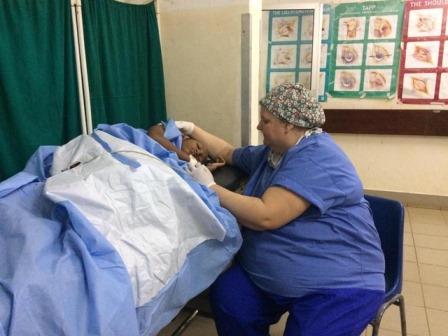
All patients came to theatre with their notes, an identifier (hand written white tape) and the children were accompanied by their parents . During almost all surgeries a WHO surgical list was filled in.All patients received pain relief (blister of Ibuprofen/Paracetamol) and a Hernia Repair Information Leaflet in both English and Swahili.
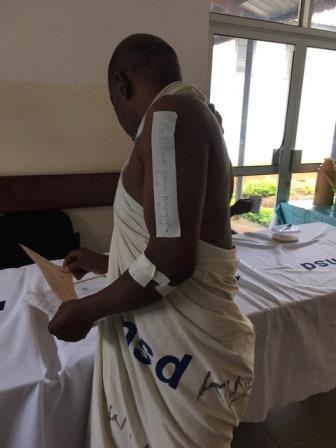
During 5 days we managed to operate on 62 patient and we performed in total 75 procedures, as some patients had bilateral pathology or a combination between hydrocele and hernia. There were 24 children operated on, all under general anaesthesia and 38 adults, 21 operated under spinal +/- sedation and 17 under local anaesthesia. Except from the halothane anaesthetic gas, most of the anaesthetic drugs were brought over by our two anaesthetist, Dr Stewart and Dr Yue.
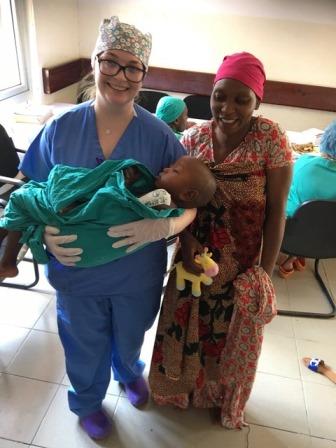
Out of the 75 procedures the majority were Inguinal and Umbilical or paraumbilical hernias. There were 8 epigastric hernia repaired and 14 hydrocele repairs. We had one patient return to theatre after an inguinal hernia repair for bleeding, haemostasis was achieved under local anaesthetic and he was discharged several days later.
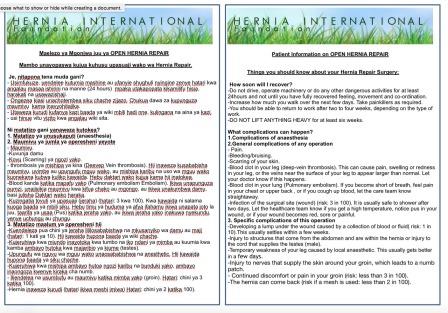
We also managed to teach the local staff and provide them with the equipment to carry on reforming hernia repair surgery, especially under local anaesthetic, outside of the missions.Our theatre nurses, Tanya, Hazel, Helen and Maelle , provided teaching on preparing the surgical trays, instruments, swabs and needles count at the end of each surgery and postoperative recovery. We also learn some new tricks ourselves .
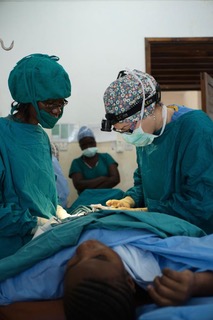
Our anaesthetic team also helped in 2 Cesarian sections , one for twins, and a below knee amputation for necrotic foot, procedure done under spinal anaesthesia.During our week in Korogwe we were joined by a group of medical students from Denmark who were there for their elective. They joined us in theatres helping with everything they could including assisting in surgery. Medicine proved again to be a common language for us all.
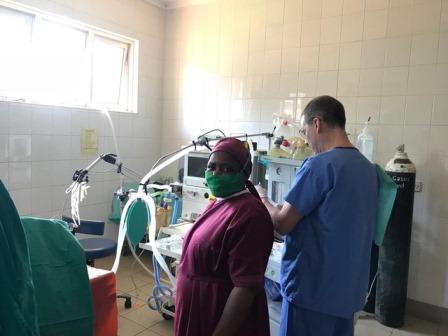
It was an exhausting, hard working week but very rewarding both professional and personal. We all worked as a team, learning from each other and improving each others practice. Performing safe surgery is achievable in any environment by using simple and general applicable tools and that has been our aim during every mission.
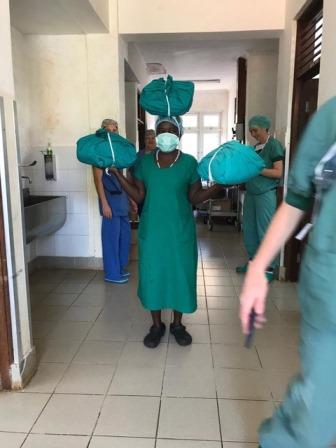
As per the local team-no patient was re-admitted due to post operative complications.On the last day we were invited by Sister Avelina to St. Joseph Healthcare Centre, part of the Convent, where our anaesthetic team was consulted in repairing one of their anaesthetic machines. This is a very nice hospital located deep in the Tanga Region Forest and provides different medical services from paediatric and Maternity care to Hernia repair, appendicectomies, lumpectomies and emergency laparotomies.
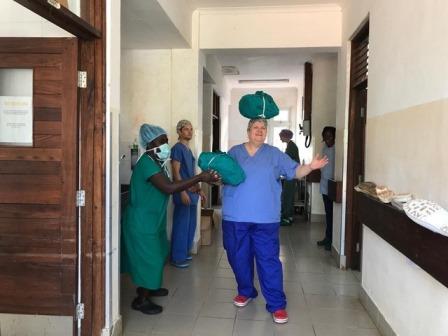
On our way to the hospital we stopped at a local school where we had the honour to bring a smile on so many faces with the help of the donated toys by our colleagues in our home hospitals and the sports equipment donated by O’Neills company and organised by our team leader, Aleksander Stanek.There were so many children at this school, and even though they very much appreciated our gift, it felt so little.Sister Avelina invited us as well for a lovely lunch at the convent and with the help of the nursing staff at the hospital , who baked a lovely cake, we celebrated the birthday of our paediatric surgeon Gergana.

On Saturday morning we said our goodbyes to Korogwe, and to Dr Wirth who went to Dar Es Salaam, and we all embarked on a trip to Arusha, circa 8 hours north from Korogwe, transport being organised , again, by Sister Avelina. The greater part of the team organised a safari as a perfect ending to a Hernia International Mission in Tanzania.
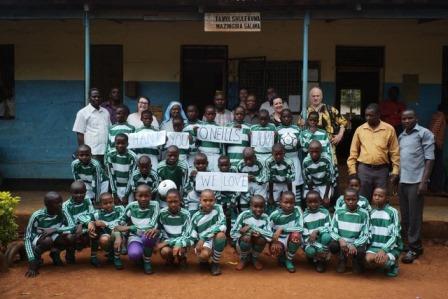
The 11th Hernia International Mission to Korogwe, was, in my opinion, a great one. An unequaled experience, with a wonderful group of people who put in their time, professionalism, humour and motivation to promote health in a remote part of the world.
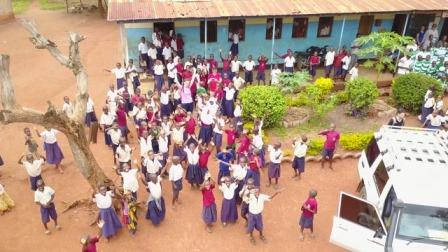
As we all got back to our homes and, to quote one of the team members, “enjoyed a glass of tap water”, I can only speak for myself but sure I am not the only one, started to think on our next adventure.
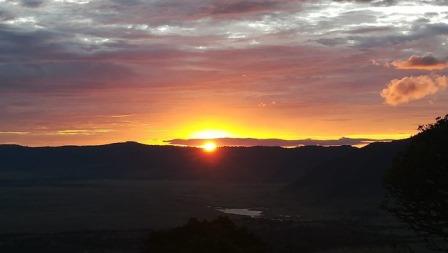
For all the team,
Dr Cristina Croitoru

